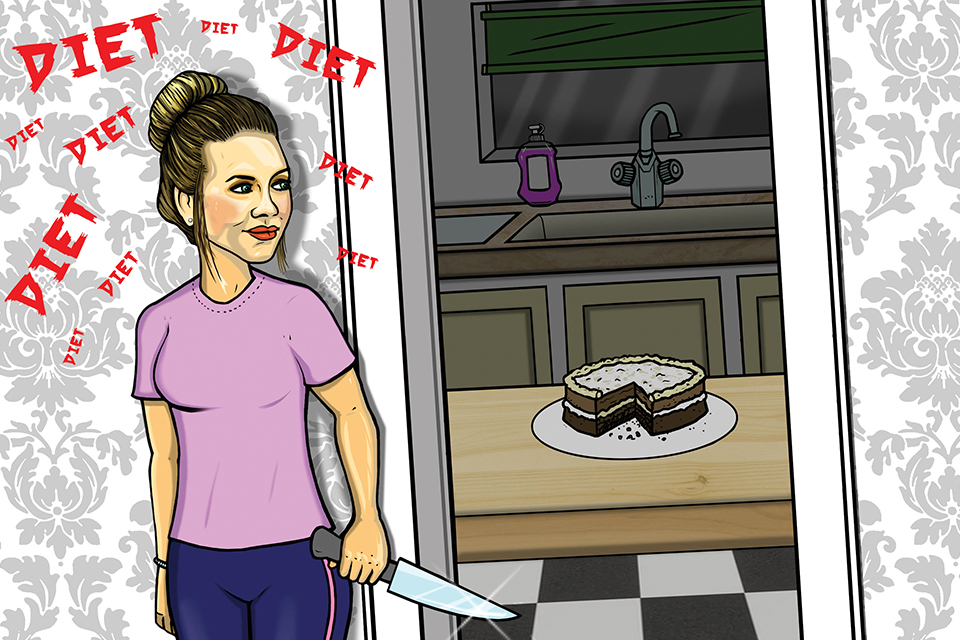Intermittent Fasting: Should Women Do It?

Touted for improving body composition, longevity and performance, I.F. is all the rage these days. However, before you jump on the fasting bandwagon, consider whether or not the benefits are worth the risks — especially for the females out there!
Food and I don’t get along. As much as I love food, it does not seem to love me back. Eating is a daily struggle that is usually tamed by a meal plan to avoid binge eating and excessive exercise to counterbalance overindulgence. I often get asked if I can eat anything I want due to my training. I scream “No!” in my head as my lips mutter, “Yes.” Others think I have it figured out. I don’t. My experiments with different diets — fads or not — usually fail to find the missing key to body equilibrium and emotional well-being.
Most of the time we explore the effect diets have on our aesthetics, but how often do we really consider the physiological and psychological aspects that diets play in our lives? We desire to look good naked but forget about the sneaky potential side effects of diets like imbalanced hormones and unhealthy eating behaviors.
Intermittent fasting is a way to manipulate the timing of your food intake to allow for periods of time spent in a fasting state which requires the body to turn to a different source of fuel — body fat. A handful of studies have found that intermittent fasting can extend life expectancy, lower blood glucose and reduce inflammation and cancer promotion. Furthermore, during times of fasting, the growth hormone is triggered, and the digestive system gets a rest. However, animals used in these studies did not have 24-7 access to a refrigerator, stressful jobs and fitness regimens. Most animals aren’t at risk for developing eating disorders, but humans are — especially women.
Over 10 million American women have an eating disorder, and 3.5 percent of women suffer from BED (binge eating disorder) sometime within their lifetime.
“Due to both psychological and physiological factors, intermittent fasting is likely to trigger the onset of eating disordered behaviors, such as bingeing, with the risk of purging behaviors and further food restriction,” said Dr. Allison Chase, Executive Director of Eating Recovery Center of Austin. Dr. Chase shared that when the fast is ultimately broken, not only is the body famished and craving increased intake, but there is also a desire to have those foods perceived as “forbidden,” which is what can set up a pattern of unhealthy or eating disordered habits.
Even more important, women’s bodies are very sensitive to signs of starvation. Regular fasting, even for a short duration, can lead to imbalanced hormone levels in women. The hunger hormones leptin and ghrelin ramp up production when they sense starvation. In an effort to stick to our diets, many of us ignore these hunger signals until we become so undernourished that we overeat, often leading to a relentless cycle of restriction and binge. Intermittent fasting for women can lead to irregular periods, metabolic stress, shrinking of the ovaries, difficulty sleeping, fertility issues, anxiety and depression. A study done on rats found that intermittent fasting can negatively impact the reproductive system. That same study found hormonal responses similar to those observed in patients with anorexia nervosa.
We still lack solid evidence from human studies that detail the benefits and downsides of intermittent fasting. A 2017 fasting study with 100 subjects did not find a noticeable difference between the results of men and women with obesity. The subjects participated in alternate-day fasting; they ate 500 calories every other day and ate normally on the other days. Alternate-day fasting helped both male and female subjects lose around six percent of their body weight. However, in comparison to daily calorie restriction, alternate-day fasting did not produce superior adherence, weight loss, weight maintenance or cardioprotection. This indicates that eating a calorie-restricted diet with no time restrictions can produce the same results as intermittent fasting. In fact, a recent study found that most diets, including intermittent fasting, are all based on a reduced calorie consumption.
The body requires a negative energy balance to lose weight. Whether that is though eliminating food groups or limiting the eating window, you are still in a calorie deficit. Even so, if you want to try intermittent fasting, tread carefully. If you have a history of an eating disorder, are pregnant, have difficulty sleeping or are under chronic stress, intermittent fasting may not be for you.
Common Methods of I.F.
Crescendo Method: The best option for women interesting in trying intermittent fasting without creating hormonal imbalance. Fast for 12–16 hours on two to three nonconsecutive days per week. If you have good results after two weeks, you can try adding one more day of fasting (but no more than every other day). Practice yoga or do light cardio on fasting days, and save strength training and HIIT for non-fasting days.
16/8 Method: Daily fasting window of 16 hours and eating window of eight hours. It is generally recommended that women only fast 14–15 hours since they seem to do better with slightly shorter fasts. On each day, you restrict your eating to an 8–10 hour eating window where you can fit in several meals.
The 5:2 Diet: Involves restricting calories two days a week to 500 calories per day and eating normally for the other five days.
Eat-stop-eat: Fast for 24 hours, once or twice per week.
Warrior Diet: Fast during the day (small amounts of raw fruits and veggies are okay), then eat one large meal at night (within a four-hour feeding window).






